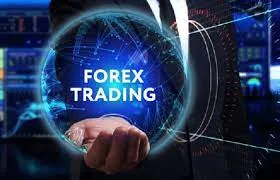
How Does Forex Trading Market Work?
The foreign trading market, commonly referred to as forex, is crucial to international finance and trade in the connected world of today. Trading currencies entails purchasing and selling them to make money off of changes in their exchange rates. This post aims to offer a thorough and interesting explanation of forex trading, illuminating the essential elements, players, and variables that affect this dynamic market.
What is Forex Trading? foreign trading market
When exchanging currencies, one currency is simultaneously bought and sold. Currency pairs like EUR/USD and GBP/JPY are traded. Every currency pair’s value is influenced by several variables, including geopolitical events, market emotion, and economic statistics.
Understanding the Basics
Currency pairings, in which one currency is purchased while another is concurrently sold, are the foundation of Foreign Trading Market. Every currency pair has a bid price (the cost for which the base currency can be sold) and an asking rate (the cost at which the foundation currency can be purchased). The spread, which is defined as the cost of the transaction, is the distinction between both of these prices.
Key Terminology, foreign trading market
Understanding fundamental jargon is essential to navigating the forex market. The phrases pips, leverage, lots, and margin are frequently used. Lots are the size of a deal, whereas pip is the smallest unit of price fluctuation. Margin is the collateral needed for opening and keeping a deal. Leverage enables traders to handle greater holdings with a smaller investment.
Participants in the Forex Market
A wide range of participants, comprising commercial banks, central banks, businesses, institutional investors, individual traders, and brokers, make up the forex market. By adopting monetary policies and participating in the market to stabilize their currencies, central banks play a significant role. Commercial banks enable currency exchanges, whereas institutional investors and businesses trade currencies to make investments or hedge risks. Brokers’ internet trading platforms are used by retail traders to trade on the market.
Market Structure and Trading Sessions
Forex trades take place across many time zones, 24 hours per day, five days a week, unlike additional financial markets. Due to the market’s decentralization and lack of a physical location, participants can transact online. The three main trading sessions—European, Asian, and North American—are distinguished by various amounts of volatility and liquidity.
Factors Influencing Forex Prices
The impact of several factors on currency prices makes Foreign Trading Market a challenging activity. These variables include market sentiment, central bank policies, interest rates, and macroeconomic indicators (like inflation, GDP, and employment data). To forecast price changes and make wise trading decisions, traders use fundamental and technical research.
Leverage and Margin Trading
Leverage is a common feature of Foreign Trading Market, allowing participants to manage larger holdings with comparatively little cash. With leverage, both potential gains and losses are amplified, rendering risk management essential. Margin trading involves the practice of opening larger positions through the use of borrowed money from a broker. To prevent taking on too much risk, it’s critical to comprehend and carefully manage leverage and margin.
Trading Strategies and Tools
Trend following, breakout trading, range trading, and carry trading are just a few of the trading tactics used by profitable forex traders. To assess market conditions and spot trading opportunities, they make use of a variety of instruments, including charts, technical indicators, economic calendars, and technical indicators. Expert advisers, another name for automated trading systems, also let traders conduct transactions following predetermined rules and algorithms.
Risk Management and Psychology
Managing the risks that come with forex trading is essential for long-term success. Setting diversifying portfolios, stop-loss and take-profit levels, and sustaining a disciplined attitude to trading are all examples of risk management approaches. Producing consistent profitability also requires a grasp of the psychological components of trading, like managing emotions while preventing rash judgments.
Keeping Yourself Updated
The key to enduring success in this dynamic and always-changing industry is to keep up with industry trends and changes. Keep in mind that Foreign Trading Market is an ongoing process of learning. For every forex trader, staying informed of the most recent changes in the market is crucial. Market volatility brought on by different geopolitical, economic, and financial events necessitates ongoing attention to detail.
Maintaining your knowledge gives you vital insights into the shifting market landscape, new trends, and fresh trading possibilities. You can reduce the risks related to obsolete or inadequate analyses by using up-to-date knowledge to help you establish informed decisions according to current information. Additionally, keeping up with economic indicators, industry news, and central bank policies enables you to modify your trading tactics and risk management as necessary. In the end, maintaining a sharp edge is crucial for success in the quick-paced world of forex trading.
Foreign Trading Market Conclusion
Participating in the international currency markets through Foreign Trading Market is a diversified and exciting option for both individuals and institutions. The market dynamics, underlying ideas, and risk management ideas can help traders successfully negotiate the challenges of forex trading. To be clear, there are risks associated with forex trading, therefore before engaging in live trading, people should conduct extensive study, consult with experts, and practice on simulated accounts.

